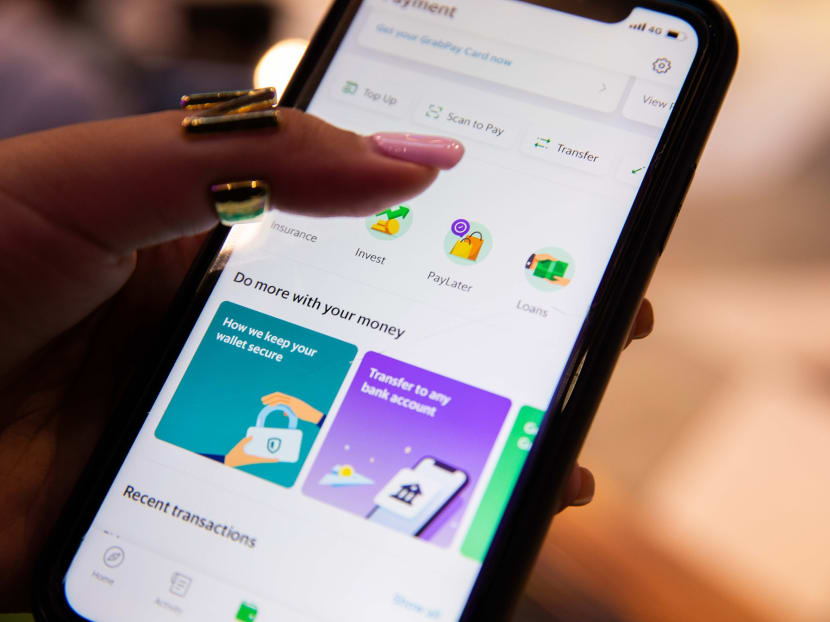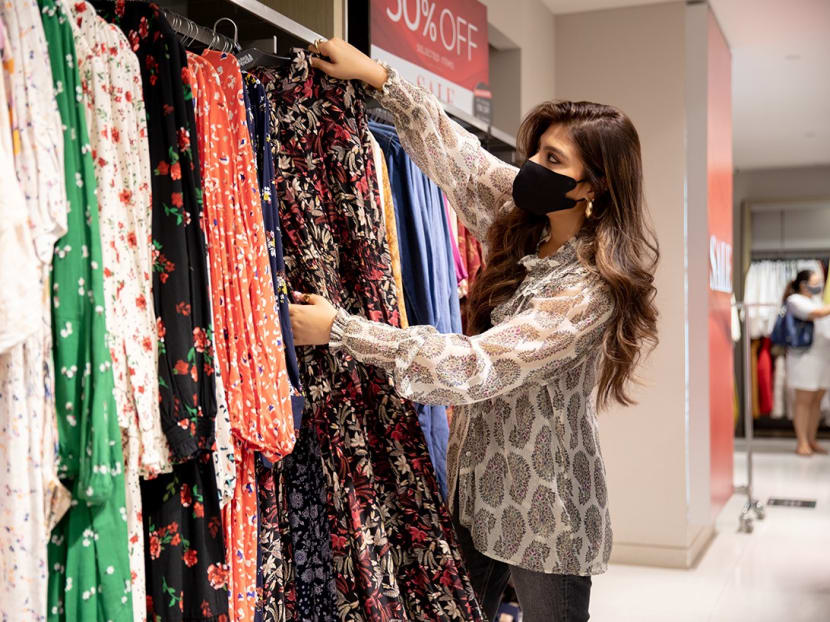Adulting 101: Love retail therapy but want to control your spending? Here’s what I’ve learnt
Adulthood is an invigorating stage of life as youth join the workforce, take on more responsibilities and set their sights on the future. But its many facets — from managing finances and buying a home to achieving work-life balance — can be overwhelming. In this series, TODAY’s journalists help young Singaporeans navigate this stage of their lives and learn something themselves in the process.
Adulthood is an invigorating stage of life as young people join the workforce, take on more responsibilities and set their sights on the future. But its many facets — from managing finances and buying a home to achieving work-life balance — can be overwhelming.
In this series, TODAY’s journalists help young Singaporeans navigate this stage of their lives and learn something themselves in the process.
SINGAPORE — A couple of clicks here, a few more there and, before you know it, you hear the sound of your doorbell: A delivery man has come bearing gifts — from you to yourself. There is no better feeling.
Who doesn’t love online shopping?
Trick question. Your future self, that’s who — especially if you’re like me and you can’t seem to stop.
For most of last year, when Covid-19 confined people to their homes, it was one of the few things that kept me going.
My pandemic-fuelled shopping has morphed into a bad habit — fine, a full-blown addiction. And my bank balance is plummeting.
I expend up to 60 per cent of my salary every month on everything from clothes to chiropractic treatment packages.
I began earning my keep after starting my first full-time job at this publication in February last year.
It was liberating for me financially. I no longer had to dip into my savings from red packets amassed from birthdays and other festivities to buy whatever I wanted.
This past year, the isolation brought on by the pandemic has meant doubling down on self-care: Facial treatments, manicure and pedicure packages, chiropractic treatment packages, a yoga membership… the list runs on.
For the record, I use a debit card. I do not have a credit card, as I don’t want to be potentially mired in a cycle of debt or spend beyond my means.
Even though my purchases have brought me satisfaction, I have become acutely aware of the need to rein in my spending.
Saving is tough work, and I wish it were taught in school.
Admittedly, I don’t have much reason to save — I’m not in a relationship and not looking to have children in the near future, and my parents are still holding down jobs and supporting themselves.
But this past year has opened my eyes to how unpredictable life can be. As a journalist, I have had a front-row seat to the pandemic’s heavy toll on the lives of Singaporeans.
With little inkling of how to budget, I set out to find ways or tools that could help me put a lid on my spending.
BUDGETING METHODS
A simple budgeting method I chanced on is the 50-30-20 rule, where one’s monthly budget is divided three ways — 50 per cent on needs, 30 per cent on wants and 20 per cent on savings.
Mr Tan Chin Yu, a client adviser at wealth advisory firm Providend, told me that the percentages are not meant to be hard-and-fast. But they serve as a good starting point for people trying to figure out how best to allocate their money.
“The advantage is that it is easy to understand and implement as they are very broadly categorised, particularly if you find managing finances a confusing endeavour,” he said.
They could be tweaked to suit one's needs.
“If you have a large future goal, such as buying a house in the near future, allocating 20 per cent to savings might not be enough.
“On the other hand, if you would like to spend more than 30 per cent on your wants, it is good to understand the trade-offs you are making for your future goals and if they are acceptable to you,” he said.
I was also intrigued by a somewhat old-school budgeting approach called the “envelope method”.
It encourages the budget-conscious to withdraw their monthly salary and put them into envelopes with strict caps on specific categories such as transport, eating out, entertainment and shopping.
This method allows the person to have greater clarity on the sums spent in various areas, Mr Tan said.
There are drawbacks though.
“It is more time-consuming to set up and track. Getting started might also be difficult, especially if you have no idea how much you have been spending in different areas.
“If that is so, it is best to not have too many categories at the start,” he suggested.
Financial adviser Damian Pang said that this method might not be practical in a digital age. It could be troublesome when it comes to making online purchases, for instance.
Then there is “zero-based budgeting”, which is a fairly similar approach to the envelope method.
Here, a person’s salary is allocated across different budget categories until there’s nothing left, or you “zero out”.
Sticking to it requires a great deal of time and discipline in recording every expense, Mr Pang said. Any unforeseen sudden expenses can also throw one off-course.
Ultimately, I learnt that when it comes to saving up, setting goals is key.
A clear goal, Mr Pang said, would bind a person on achieving it in the shortest possible time and on prioritising resources towards that end.
“The first question you should ask yourself is: What is your goal? To buy your first condo unit? To buy your first Housing and Development Board flat? To have S$100,000 by age 30? That will affect your budget in many ways,” he said.
Of the three, the 50-30-20 method sounded like a perfect start.
I will give it a shot as I figure out my goals. I am also considering a savings plan where I can put aside 20 per cent of my income every month, so I can start amassing funds for a rainy day.
BUY NOW, PAY LATER
Still, the desire to pamper myself is real and even the best-laid plans can go awry.
In the last few weeks, as I hit the shops in town, promoters introduced me to a “buy now, pay later” service that allows users to pay for their purchases across three or four interest-free monthly instalments. No upfront payment is needed.
On the websites of selected merchants that have registered with buy-now-pay-later providers, users add the items they wish to buy to their cart. At the check-out stage, there will be an option to use these services.
Compared with credit cards, such services allow consumers to spread out their payments over a longer period.

I have since found out that there are several players in the market, including technology company Grab, which has a PayLater service. Other service providers include Hoolah, Rely and Atome.
While the firms do not charge interest, they do stop users from making further purchases if they fail to pay on time. Late fees of between S$10 and S$30 are also imposed.
I have recently been toying with the idea of buying a sturdy office chair, costing about S$600, with one of these services. Prolonged use of my current metal chair is the reason I have weekly chiropractic treatments to correct my posture.
And given that remote working looks set to continue into the foreseeable future, I want to invest in a more comfortable chair that would help me save on my visits to the chiropractor’s office.
Mr Lim Kell Jay, head of Grab Financial Group Singapore, said that an advantage of tapping buy-now-pay-later services is that they can help consumers manage their spending and cash flow better.
But he cautioned that the option is effective only if consumers exercise strict financial responsibility and can afford the monthly payments.
Grab, for one, imposes a spending cap based on users’ profiles and payment practices.
Before tapping any buy-now-pay-later service, consumers should consider whether they have a budget that can be set aside for the monthly payments, bearing in mind other instalment plans to which they may already have committed.
Mr Tan from Providend said that this option can free up cash for other needs and make purchases more manageable.
The catch is, users may risk overspending.
“Being able to access cheap borrowing and breaking it down into smaller repayments can create a false sense of affordability.
“Such services also encourage having a mindset of instant gratification,” he cautioned.
Some might also overestimate their ability to make repayments, should there be unexpected income losses or sudden one-off expenses. For consumers facing trouble repaying their debts, the sums could start a cycle of debt, he said.
The upside is that the service will allow me to split up the payment for the chair into three or four instalments of S$150 to S$200 a month, giving me room to spend on other wants.
I can see how this may also become a slippery slope.
I could easily buy more than I can afford since the first payment is not a big sum. Should they add up, I would have another problem to worry about.
My priority now is to get the basics of budgeting sorted out and come up with a careful, disciplined approach to managing my finances.
It is only when I have complete control that I can begin considering the buy-now-pay-later option and others, while keeping a close watch on my bank balance.
ABOUT THE WRITER:
Natasha Meah is a journalist at TODAY covering the education, community and finance beats.
This article was done in partnership with Grab.









